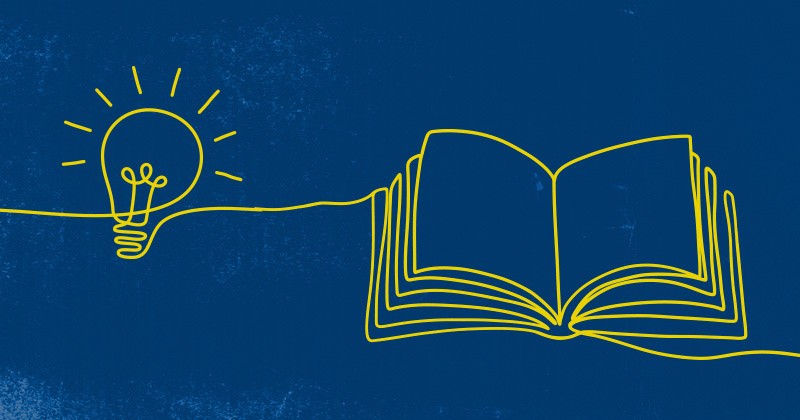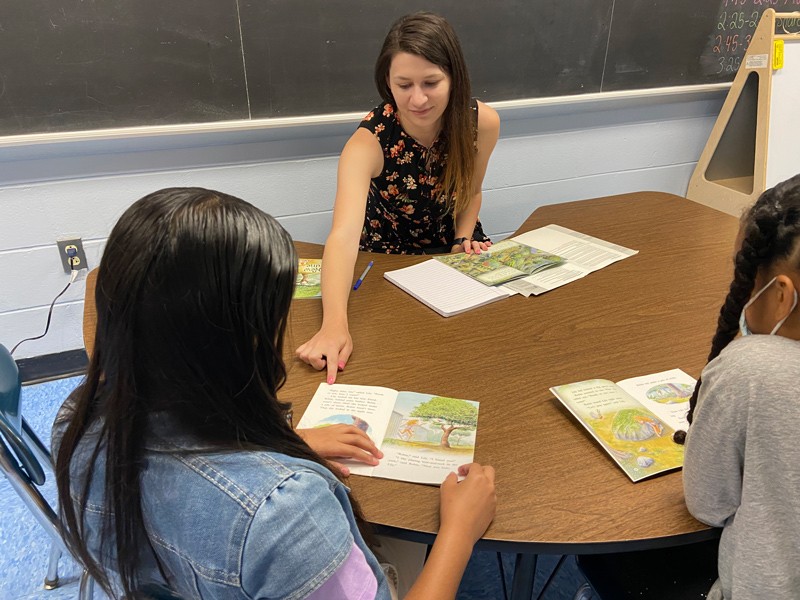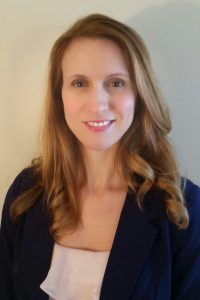Reading instruction

UD professors teach future educators to use evidence-based practices
When Alison Campbell, a third grade teacher at Lindenwold School 4 in New Jersey, began the 2021-2022 school year, only 40% of her students were reading on grade level. By the end of the school year, that number jumped to 90% — an increase she credits to the strategies and practices she’s learned from the University of Delaware’s master’s in literacy program.
“I love teaching, and I love reading, which is part of the reason why I wanted to do the reading program and learn so much more about how to teach literacy,” said Campbell, who is finishing up the master’s program during the summer of 2022. “Every time I give an assessment and I see the students grow — it’s amazing. It’s good to know that these kids have grown so much.”

One of the most important tasks that teachers of young elementary school students face is teaching children how to read. UD’s College of Education and Human Development (CEHD) prepares them to do just that by using evidence-based instruction and strategies.
The education graduate programs within CEHD are recognized by U.S. News and World Report as among the best in the nation. The college is ranked at 39 among colleges and universities, placing it in the top 15% of education colleges nationwide. The program, as well as UD’s elementary teacher education (ETE) program, is informed by research and taught by nationally known, award-winning faculty.

“It’s really important to use research-based practices because our time in school is really limited,” said Professor David Coker, who teaches courses in CEHD’s School of Education (SOE) on writing and reading instruction. “A teacher’s day is crammed full of things, and teachers really want to maximize the impact of their instruction. They want to do the best they can for their kids to help them grow as readers, and the way to do that is to use the most effective practices.”
Literacy skills are recognized as one of the strongest predictors of academic success. Research has shown that if children can master decoding practices and age-appropriate levels of comprehension in early grades, they’re much more likely to be successful in middle school, high school and beyond.
If students can read and write, they can do all kinds of academic tasks throughout their school years. And if they can’t, their ability to learn new things is severely affected.

“Building a very strong foundation early is critical to be able to help kids be successful as they move throughout the school years,” said Christina Budde, who is an assistant professor in the SOE and specializes in language and literacy education. “As your school years build on, you’re just learning more and more. If you think of it as a foundation, if there’s all these little cracks or holes missing in the foundation, and you’re adding on to that foundation, it gets much more difficult to fill in those cracks and holes as we move up through the grade levels. But if we can build a really strong foundation in the beginning, then we set kids up for far more success throughout their academic career.”
Teaching children to read is complex, and there are different approaches to teaching literacy, with some methods focusing on phonics and others focusing more heavily on language comprehension. Research has shown, however, that the most effective instruction includes explicit instruction in both.

“Reading is a really broad concept. The evidence supports thinking about reading as a component-based concept, so there are different components that go into it,” said SOE Professor Steve Amendum, whose research areas include early reading intervention, literacy development and evidence-based classroom instruction. “Students need vocabulary knowledge, they have to have phonics knowledge, they have to have strategies for comprehending and so on. The evidence in the field supports these different components that are important to making sure that students can read proficiently, and so we address all of those components in our courses.”
Critical to building a foundation of literacy is having an understanding of phonics. Recently, one of the nation’s leading literacy experts rewrote her curriculum to place a stronger emphasis on phonics and the science of reading — something that UD’s CEHD professors have always embraced.
“We’ve known for a long time that systematic instruction in phonics is required for teaching kids how to read, and so we have always made sure that our teachers are trained in evidence-based practices,” Coker said. “We teach students the fundamental procedures, strategies and content knowledge that teachers really need to have to be effective reading and writing teachers.”
Unlike language, which is acquired naturally through exposure to opportunities to communicate, reading is something that has to be taught.

“All kids and all individuals — all humans — need to learn to read and write from somebody. It’s not natural,” said SOE Professor Sharon Walpole, who recently served as the director of CEHD’s Professional Development Center for Educators (PDCE), which partners with teachers and administrators to craft services that meet the particular needs of schools and school districts. “Language development for humans is natural, but it’s not the same thing for learning to read and spell — those things are human inventions, and they have to be taught. Almost all children can learn to read if they get strong access to instruction, and I think it’s a civil right that they get that at school.”
As part of UD’s ETE program, students are required to take three literacy courses, as well as an additional course focused on literacy for English learners. At many universities, students are required to take only one literacy course.
“Delaware districts are so eager to hire our grads,” Walpole said “Our students get jobs because the HR directors and school districts know that we’ve trained them in these things. And that’s the most important thing: Is there respect for our program in the field? And there definitely is.”
Photos by Maria Errico, courtesy of Alison Campbell | Illustration by Jeffrey C. Chase



